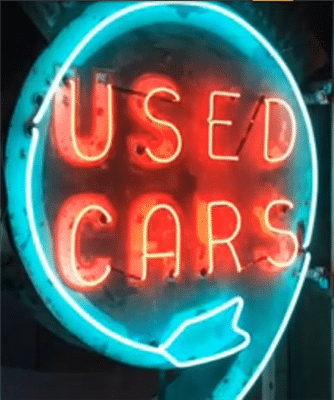How Cities Develop Signage Plans
ADA, Architectural Signage, Design/Build, Exterior Signage, Others, Sign Design, Signage Regulations, Signage TipsBusiness signage plays an important role in the life of any city, not only because it supports commerce and the livelihood of individual businesses, but also because the overall appearance of a city’s signage helps communicate and even define its character. Think about the differences in signage between Boston and Las Vegas, for example, and what that signage says about each of those cities.
Generally, governments do not heavily regulate the content of any signs (although the Americans with Disabilities Act does set forth some standards for signage content).
Rather, each city government tends to develop its own set of signage regulations, in an effort to control the appearance of the city’s built infrastructure and also to tame the impulses of business owners who are primarily concerned with attracting more customers.
To accomplish their regulatory purposes, most municipalities tend to focus on signage sizes, brightness, construction, placement, and overall safety.
The process is usually long and complex, beginning with rules put forward for public comment, then codified into specific guidelines and regulations. Once in place city signage regulations are amended very slowly to reflect changing technology and signage trends. In addition, “variances” may be granted that allow individual signs to violate specific requirements for particular reasons.
Issues for Signage Regulation
Among the issues that a city’s Comprehensive Signage Plan is likely to address are the following:
Size of the Signage: The limits on size may vary greatly depending upon the exact location and style of the sign, as well as the type of building on which it hangs. In “wide open” areas, regulations may allow much larger signs than in tightly packed urban areas, which tend to have a great many signs competing for limited visual space.
Illumination of the Signage: Some cities, like San Diego and Tucson, enforce very strict illumination rules to protect scientific or other special interests. Others are more free-wheeling. But generally all cities regulate the overall brightness of signage, and the hours during which signs may be illuminated.
Window Signage: When a sign is placed within a foot or two of an exterior window so as to be seen from outside, it’s classified as a window sign, and is often subject to special regulations. In many cities, window signs that are physically painted on the window may be less regulated than conventional signage merely displayed behind the window, particularly when they occupy a relatively small portion of the total glass area. When window signs get too large, they usually fall under other regulations, such as those for wall signs.
Wall and Wall-Mounted Signs: There are a variety of wall signs that may be include in a city’s signage regulations. This category of signage includes everything from signs that are painted directly on the surface and those made of fabric large enough to cover the entire side of a building to signs that are mounted on the building’s exterior walls, like sign cabinets, channel letters, and blade signs. Most cities regulate the size and locations of these signs in an effort to keep their skyline from becoming dominated by advertising.
Free-Standing Signs: Some of the most controversial – and therefore highly scrutinized by government regulators – are free-standing signs, including pylons and monuments. Location, setback, illumination and size (to include overall square footage and height above grade) are all key elements that go into the approval process for these types of signs, as well as input from the community.
Prohibited Signage: Most cities define what kinds of signs may not be displayed at all. These may include such specialty signage as roof signs, beacons, spotlights, flashers, blinkers, pennants, streamers, windsocks, stringed flags, inflatables, tethered balloons, and in some localities even LED signage.
Temporary Signage: Few cities bother to regulate signs that are not going to stay in place for long periods. This explains why many signs are mounted on trailers or vehicles, allowing their owners to argue the signs are temporary rather than permanent. Small real estate, political, and noncommercial speech signs (particularly in residential areas) often escape regulation. Should they be made too large, however, or should too many be placed on one property, even “free speech” signage can fall under some form of regulation.
Sandwich Boards: Made popular during the Great Depression, so called “sandwich boards” are still in heavy use outside some business establishments. Because they occupy relativelyl scare sidewalk space, they are usually regulated as to size and placement.
Signage regulation is an area fraught with complexity for the average businessman. But it’s the ordinary environment in which we do business every day. If you think you may be facing local or federal requirements for your current or future signage, we encourage you to please contact us for a free evaluation from our professional team.

